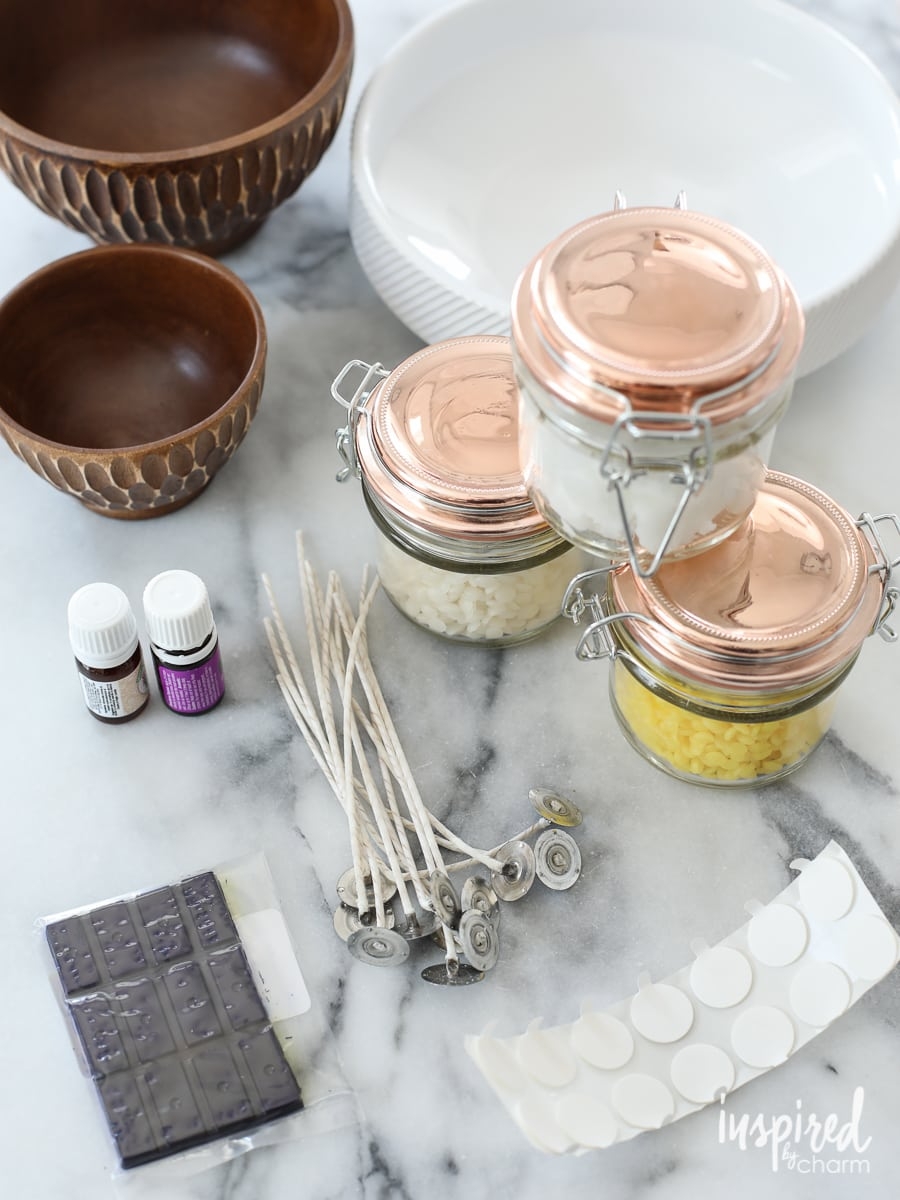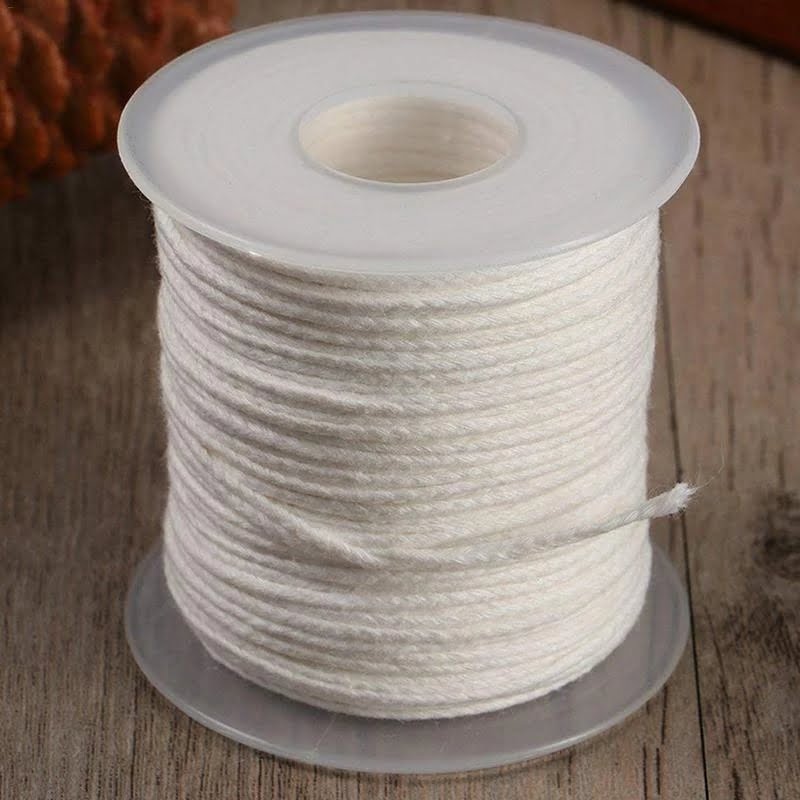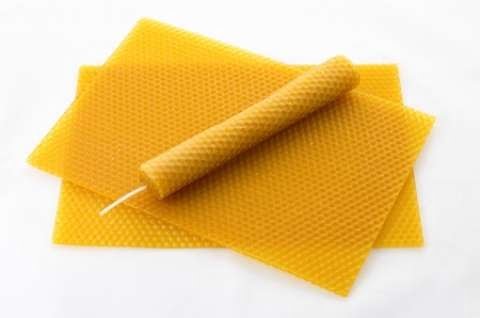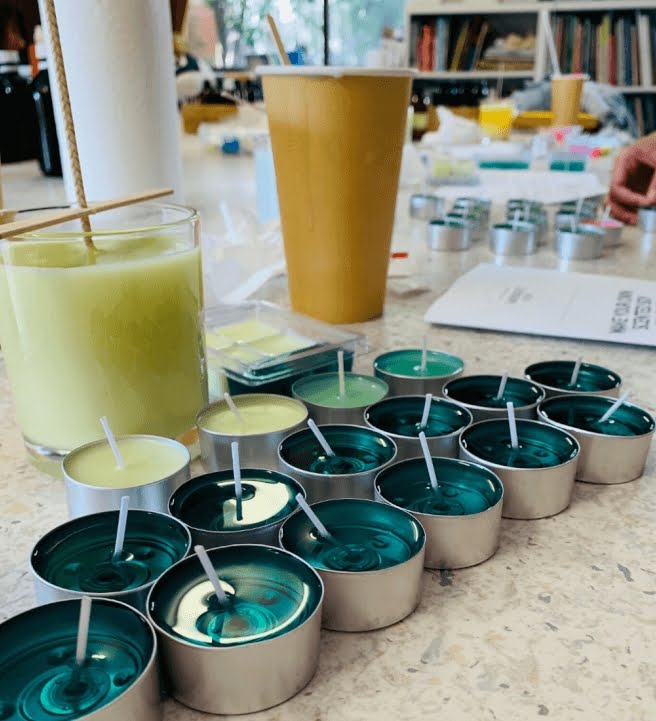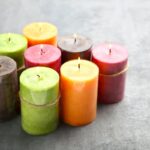Are you interested in exploring the world of candle making? Whether it’s a new hobby or a potential business venture, learning how to start candle making can be an exciting and rewarding experience. In this article, we will take you through the art and craft of candle making, from the history of this time-honored tradition to the essential supplies and techniques needed to create beautiful, fragrant candles.
Candle making has been a cherished practice for centuries, with candles holding both practical and symbolic significance in various cultures around the world. From providing light in the darkness to serving as offerings in religious ceremonies, candles have played a vital role throughout history. Today, candle making continues to thrive as a popular craft, offering individuals the opportunity to express their creativity and create unique products for personal use or sale.
Before diving into the candle making process, it’s crucial to understand the fundamental materials and tools required for this craft. From wax and wicks to molds and fragrance oils, choosing the right supplies is essential for creating high-quality candles.
Additionally, familiarizing yourself with different candle making techniques such as container candles or pillar candles will allow you to explore various methods of crafting unique and personalized creations. Stay tuned as we guide you through each step of this enlightening journey into the world of candle making.
Choosing the Right Candle Making Supplies
Wax
When it comes to choosing the right wax for your candle making endeavors, there are several options to consider. The most common types of wax used in candle making include paraffin, soy, beeswax, and gel wax.
Each type of wax has its own unique properties, such as burn time, fragrance retention, and color possibilities. Paraffin wax is known for its excellent scent throw and affordability, while soy wax is a popular choice for those seeking a more natural and eco-friendly option.
Wicks
Selecting the appropriate wick for your candles is crucial in ensuring an even burn and optimal performance. Wicks come in various sizes and materials, such as cotton or wood, and it’s essential to match the wick size to the diameter of your candle.
Too small of a wick can result in tunneling (uneven burning), while too large of a wick can lead to excessive smoking. It’s recommended to use wick sustainers or tabs at the base of the wick when securing it in the mold or container.
Molds
The choice of molds for your candle making project will depend on the type of candles you intend to create. If you’re interested in making container candles, glass jars or tins can serve as suitable molds. For pillar candles, cylindrical metal or plastic molds may be used.
There are also silicone molds available in various shapes and sizes for creating unique designs like hearts, stars, or flowers. Additionally, consider whether you want reusable or disposable molds based on your production volume and budget.
Fragrance Oils
Choosing high-quality fragrance oils is essential for achieving a desirable scent profile in your handmade candles. There is a wide array of fragrance options available, including floral scents like rose or jasmine, fresh scents like ocean breeze or linen, and warm scents like vanilla or cinnamon. It’s important to follow recommended usage rates provided by suppliers when adding fragrance oils to your wax to avoid overpowering aromas or potential safety hazards.
Overall,sourcing top-notch supplies is integral in laying down a strong foundation as you start candle making journey. By carefully considering factors such as wax type,mold variety,wicking materials,and fragrances,you can guarantee smoother process along with superior final products.
Understanding Different Candle Making Techniques
Making candles can be an enjoyable and rewarding hobby, and with the right techniques, you can create beautiful and functional pieces for yourself or to give as gifts. When it comes to candle making, there are several different methods and styles to consider. Each type of candle has its own unique set of processes involved in bringing it to life.
One of the most popular types of candles is container candles. These are made by pouring wax into a container such as a jar or tin, which not only holds the wax but also acts as the vessel from which the candle burns. Pillar candles, on the other hand, are freestanding and don’t require a container.
They come in various shapes and sizes, making them versatile for different uses. Lastly, taper candles are long, narrow candles that are traditionally used in candlestick holders or candelabras.
Each type of candle has its own specific technique for creating it. For example, container candles involve securing the wick at the bottom of the container before pouring in the wax. Pillar candles require proper mold preparation and a different pouring technique to ensure they maintain their shape. Taper candles must be carefully dripped or dipped multiple times to achieve their slender form.
As you start your journey into candle making, it’s important to explore each method and find what works best for you based on your preferences and available resources.
| Types of Candles | Unique Processes Involved |
|---|---|
| Container Candles | Securing wick at bottom of container; specific pouring technique |
| Pillar Candles | Mold preparation; unique pouring technique |
| Taper Candles | Dripping or dipping method for slender form |
Safety Precautions for Candle Making
When starting with a new hobby like candle making, it is crucial to prioritize safety. Working with hot wax, fragrance oils, and other potentially hazardous materials requires careful attention to avoid accidents and injuries. Here are some essential safety precautions to keep in mind when engaging in the art of candle making:
- Always work in a well-ventilated area to prevent inhalation of fumes and ensure proper air circulation.
- Use protective gear such as gloves and safety goggles when handling hot wax to avoid burns or splatters.
- Keep flammable materials away from heat sources and open flames to reduce the risk of fire hazards.
- Never leave melting wax unattended, as it can quickly reach high temperatures and ignite if left unchecked.
It’s also important to be mindful of the potential dangers associated with working with fragrance oils and other additives used in candle making. Some fragrance oils may cause skin irritation or allergic reactions, so it’s essential to handle them with caution and follow proper safety guidelines when using them in your candle creations.
In addition, when using dyes or colorants to customize your candles, be sure to choose ones that are specifically designed for candle making and carefully follow dosage recommendations. This will help prevent skin irritation from excessive exposure or staining of surfaces in your workspace.
By prioritizing safety measures and being mindful of potential hazards, you can enjoy the art of candle making while minimizing risks and ensuring a safe crafting experience. Remember that being proactive about safety will allow you to fully immerse yourself in the creative process without worrying about accidents or mishaps.
Selecting the Perfect Candle Fragrance
When it comes to candle making, selecting the perfect fragrance is a critical step in creating a product that will be enjoyed by others. The scent of a candle can evoke certain emotions, set a mood, and even bring back memories for the person enjoying it. Therefore, it’s essential to carefully consider your options when choosing the right fragrances for your candles.
Popular Fragrance Options
There are countless fragrance options available for candle making, ranging from floral and fruity scents to warm and cozy aromas. Some of the popular fragrance choices include lavender, vanilla, sandalwood, citrus, and more. It’s important to think about the preferences of your target audience when selecting fragrances for your candles. You may also want to consider seasonal scents that align with different times of the year, such as pumpkin spice for fall or ocean breeze for summer.
Blending Different Scents
For those looking to create a customized aroma for their candles, blending different scents can be a fun and creative process. By combining multiple fragrance oils together, you can achieve a unique and signature scent for your candles. Experiment with different combinations, taking note of the proportions used and how each scent interacts with the others. Keep in mind that some scents pair better together than others, so it may take some trial and error before finding the perfect blend.
Fragrance Oil Quality
It’s important to invest in high-quality fragrance oils when creating scented candles. The quality of your fragrance oils will directly impact the overall scent throw and longevity of your candles. Look for reputable suppliers that offer a wide variety of fragrance options and provide detailed information about their products’ performance in candle making. Choosing premium-grade fragrance oils will ensure that your candles have a strong and pleasant aroma when burned.
By carefully considering your options when selecting fragrances for your candles and experimenting with different blends, you can create beautifully scented products that appeal to a wide range of consumers. Whether you’re making candles as gifts or considering starting a candle making business, choosing the right scents is an essential part of the process.
Step-by-Step Guide to Making Your First Candle
The first step in creating your own candles is to gather all the necessary supplies. The essential materials you will need include wax, wicks, fragrance oils, a double boiler or melting pot, a thermometer, and a container or mold for the candle.
When it comes to choosing wax for your candles, there are several options available, including paraffin wax, soy wax, and beeswax. Each type of wax has its own unique characteristics and benefits, so it’s important to select the one that best fits your preferences and needs.
Once you have all your supplies ready, it’s time to prepare the work area. Make sure to cover the surface with newspaper or paper towels to protect it from any spilled wax or oil. Place your double boiler on the stove and add the desired amount of wax to melt.
It’s important to use a thermometer to monitor the temperature of the melting wax carefully. Different types of wax have different melting points, so be sure to follow the specific instructions for the type of wax you are using.
After the wax has melted completely and reached the proper temperature, it is time to add fragrance oil if you desire scented candles. Stir in the fragrance oil thoroughly but gently to ensure that it is evenly distributed throughout the melted wax.
Next, prepare the wick by dipping it into the hot wax and then carefully placing it into your chosen container or mold. Once this is done, carefully pour the melted wax into your chosen container or mold and ensure that everything is centered properly before allowing it time to cool and set.
| Supplies Needed | Materials |
|---|---|
| Wax | Paraffin Wax |
| Thermometer | Digital Thermometer |
| Fragrance Oils | Lavender Oil |
Decorating and Packaging Your Handmade Candles
When it comes to candle making, the creativity doesn’t stop with the actual creation of the candles. After you have successfully made your candles, the next step is to add personal touches and package them in an attractive way. This not only enhances the overall aesthetic appeal of your products but also makes them more appealing as gifts or for sale. Here are some creative ideas for decorating and packaging your handmade candles:
1. Personalized Labels: Create custom labels for your candles that reflect your brand or the theme of the candle. You can include information such as the scent, ingredients used, and burning instructions. Consider using a unique font or adding your logo to make your candles stand out.
2. Decorative Wrappings: Use decorative materials such as tissue paper, ribbons, or fabric to wrap around your candles. This adds a special touch and can also protect the candles from getting scratched or damaged.
3. Custom Containers: If you are making container candles, consider decorating the containers themselves. You can paint or etch glass containers, or use decorative jars and tins to house your candles.
4. Embellishments: Add embellishments like charms, beads, or dried flowers to the outside of your candles for an extra decorative element.
5. Personalization: Offer personalized options for customers by allowing them to customize their own labels or containers with names, dates, or special messages.
These creative packaging ideas will not only enhance the appearance of your handmade candles but also make them more appealing as gifts and products for sale.
Remember that packaging is important not only for aesthetic purposes but also for protecting your finished products during transportation and storage.
Tips for Starting a Candle Making Business
In conclusion, candle making is not only a fulfilling hobby but also a potential business opportunity for those interested in entrepreneurship. With the right supplies and techniques, anyone can start candle making from the comfort of their own home. Whether you are looking to create unique gifts for loved ones or start your own business, the art of candle making offers endless possibilities.
Turning your newfound candle making hobby into a business venture requires careful planning and consideration. Taking the time to understand marketing strategies, pricing your products competitively, and identifying a target audience are crucial steps in ensuring success. By utilizing social media platforms, craft fairs, and online marketplaces, you can effectively promote your handmade candles and reach potential customers.
With dedication and creativity, starting a candle making business can be a rewarding endeavor. As you continue to explore different fragrance options and decorative techniques, remember to stay true to your brand’s identity. By maintaining quality and consistency in your products, you can build a loyal customer base while enjoying the artistic freedom that comes with being a candle maker. So don’t hesitate – start candle making today and unleash your creativity.
Frequently Asked Questions
How Profitable Is Candle Making?
Candle making can be a profitable venture if done right. With the right marketing, quality products, and unique designs, it’s possible to make a good profit. However, like any business, success in candle making requires dedication and hard work.
What Do I Need to Start Making Candles?
To start making candles, you’ll need some essential supplies such as wax, wicks, fragrance oils, a double boiler or melting pot, a thermometer, molds or containers for the candles, and a workspace with good ventilation. Additionally, having labels, packaging materials, and tools for decoration can also be helpful.
How Do You Start Off Making Candles?
To start off making candles, begin by researching different candle-making techniques and deciding which type of candles you want to create. Then, gather all the necessary materials and set up your workspace. Next, carefully melt the wax using the double boiler method and add fragrance oils if desired.
After that, prepare your molds or containers and carefully pour the wax into them while securing the wicks in place. Allow the candles to cool and solidify before trimming the wicks and adding any decorative touches.

Welcome to my candle making blog! In this blog, I will be sharing my tips and tricks for making candles. I will also be sharing some of my favorite recipes.

